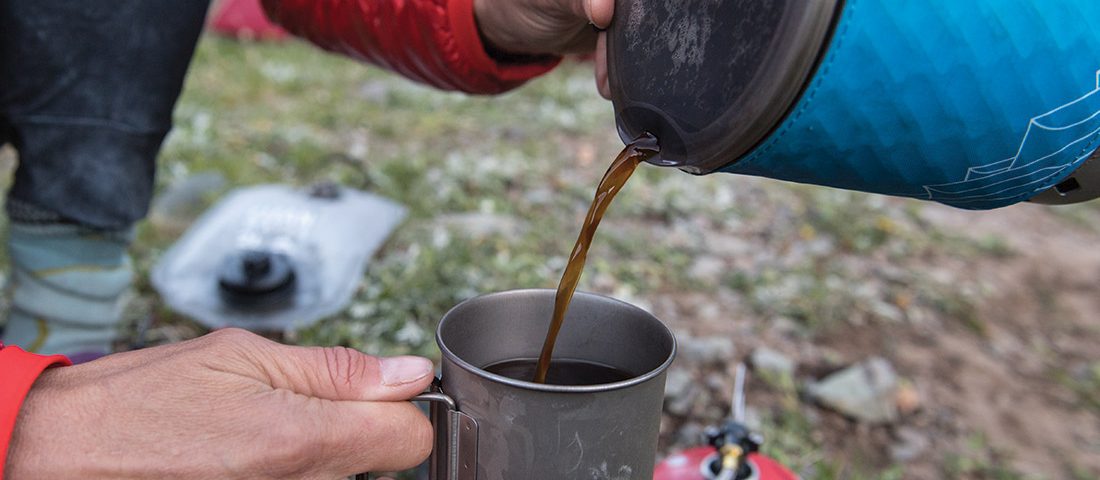I followed the instructions: lit a match, twisted the flame adjuster, and held the match near the burner for a couple of seconds until the stove was alight. The pot went on the stove, wearing its nifty insulating jacket with attached handle and its ‘how does it not melt?’ plastic lid. I sat for a minute admiring the fading light and majestic blue gums before I looked down, ignoring the old saying about watched pots. Small bubbles were already rising through the water: Marleen had better hurry.
The Windburner Duo is delightful to use. It took about 30 seconds to assemble: I simply tipped the components out of the pot, screwed the canister to the stove’s fuel line, extended the stove legs and remembered to take the bowl off the pot’s base. In another ten seconds the stove was lit and the pot perched on its stable base, lid on. In less than five minutes it was boiling, with the pasta ready ten minutes later when Marleen and the kids returned. (Boil time depends on temperature and altitude.)
Designed as a stove system for two, the Duo contains everything needed for cooking and eating (except cutlery) – one person can eat from the bowl while someone eats from the pot (gotta love that insulating cover with attached handle!) and the lid has slots so it can double as a colander. Capacity is fine for two: we filled the pot to the max (or at least the corresponding line inside that YOU MUST NOT GO OVER!) and had just enough pasta to feed two adults and two ravenous nine year olds. It is well-designed and thought out, stable, simple to use, and packs down into the pot (12.5 x 20.5 centimetres), weighing in at 630 grams without the canister. (An 8-ounce canister fits inside too, weighing around 370 grams when full.)
It is also speedy and efficient. Before cooking, there’s no need to prime or pump and no fiddling around. The burner’s heat is consistent regardless of the amount of gas in the canister, and the output is easy to control. The magic lies in how the stove meshes with the pot. Each Windburner pot has an attached ‘heat exchanger’: basically a two centimetre rim with a fan of ridges inside that deflects wind and directs heat to the pot’s base, increasing both fuel efficiency and boiling speed. This rim also adds to the stability of the stove assembly as the pot is not balanced on top but held in place.
There are lots of other features worth mentioning, from the indicator wire in the burner’s grid that glows when hot, to the ease of packing the stove back inside the pot. Cleaning was easy, although a bit of caked-on porridge was our biggest test.
The drawbacks relate to fuel, in terms of waste, cost and sourcing it. The amount of fuel left in a canister is hard to gauge, so the safest course of action is to take a new one for every biggish trip, leaving a whole bunch of partially used canisters. These are recyclable in theory, but first have to be emptied and punctured. (And whether they will then be recycled is anyone’s guess!) They are also not allowed on planes, and may be hard to source if you’re travelling somewhere remote. An 8 oz canister costs $14.50; according to MSR, each burns for approximately 95 minutes, enough to boil 18 litres of water.
Other Windburner pots are available to increase the versatility of the system – a 2.5 L sauce pot, 4.5 L stock pot, and a ceramic skillet. (RRPs $195, $229 and $165, respectively.)
Review: M Holbeck
RRP: $419.00, www.spelean.com.au


